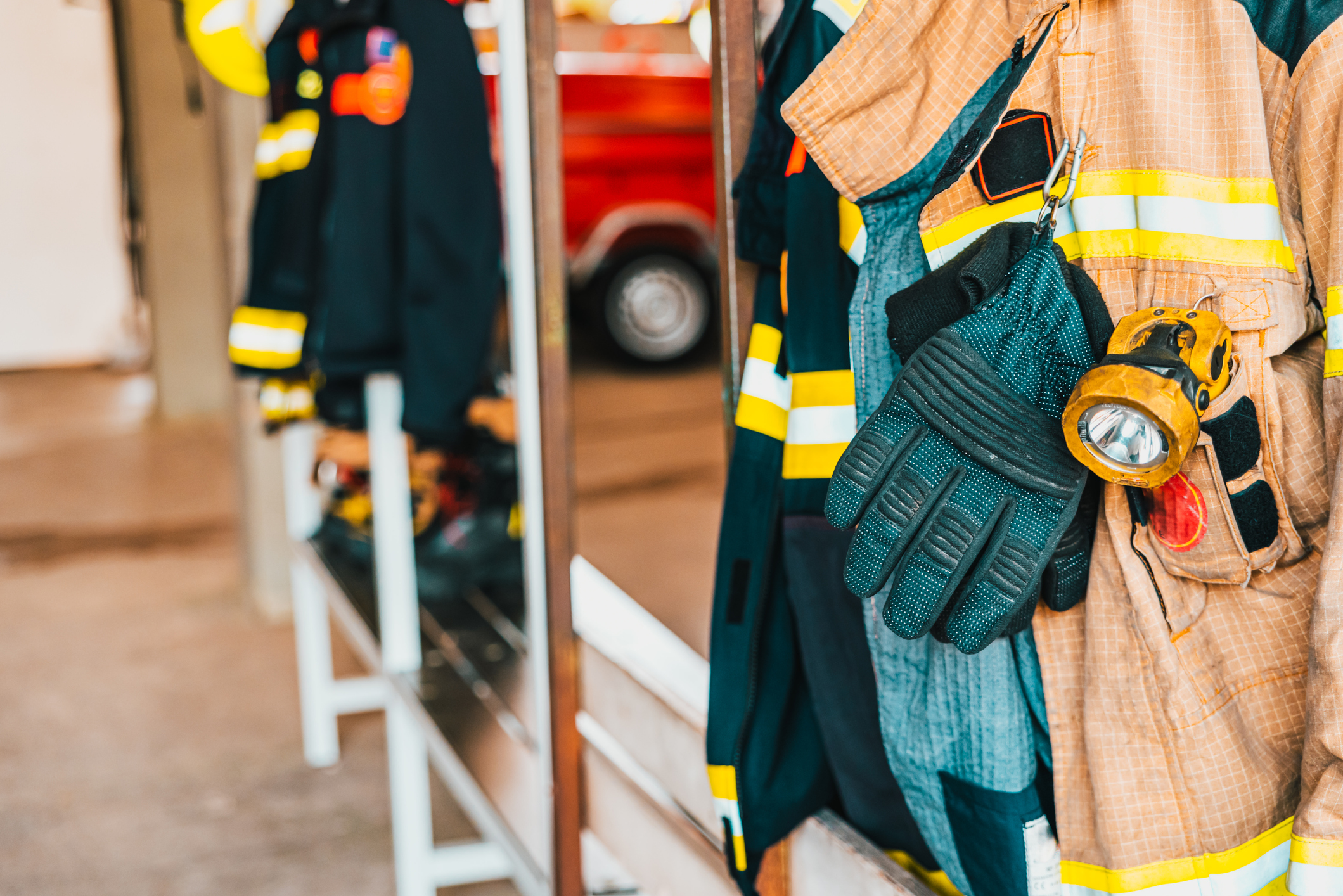By: Emergency Technical Decon Team
When it comes to firefighter safety, most conversations about PPE focus on turnout coats, pants, boots, and SCBA. But two of the most critical—and often most overlooked—items are firefighting gloves and hoods. These smaller articles are essential in protecting some of the body’s most vulnerable areas, yet they are routinely left out of routine decontamination practices, creating a significant risk for chronic PFAS exposure and other health threats.
As awareness grows around cancer risks in the fire service and the regulatory landscape tightens, it’s time to look closely at what we’re missing in our PPE maintenance routines—and why it matters.
Small Gear, Big Risk: How Gloves and Hoods Become Contaminated
Firefighting gloves and hoods are direct points of contact between the firefighter and toxic elements present during and after a fire. Hoods protect the head, neck, and jawline, where the skin is thinner and more permeable—making it easier for carcinogens to be absorbed. Gloves are constantly in motion, touching gear, hose lines, debris, and contaminated surfaces throughout a fire scene. Neither the head or neck have any other barrier between the skin or gear, unlike the torso or arms which can have a base layer between the skin and gear.
Studies have shown that contaminants like PFAS (per- and polyfluoroalkyl substances), PAHs (polycyclic aromatic hydrocarbons), and VOCs (volatile organic compounds) can accumulate in these soft materials of fabric and linger long after a call is over. Because they are close to skin and mucous membranes, even trace exposure can have cumulative health effects.
Why These PPE Items Are Often Left Unwashed
Despite their heavy use and high contamination risk, gloves and hoods are often excluded from full gear cleaning for several reasons:
- Perceived inconvenience: Smaller items may be seen as too difficult or time-consuming to clean individually.
- Lack of replacement inventory: Departments may not have extra gloves and hoods available to rotate in during drying or repairs.
- Improper washing methods: Many departments don’t have access to NFPA-compliant cleaning solutions for delicate PPE and may fear damaging the materials in standard washers.
- Underestimation of risk: There’s still a common misconception that these items aren’t as “dirty” as outer gear because they don’t directly touch flames or soot.
These practices can lead to cross-contamination between calls, continued skin contact with toxins, and prolonged exposure to cancer-causing substances.
What Fire Departments Should Be Doing
To protect firefighters and stay compliant with emerging PFAS regulations, departments should take these steps:
- Establish a decontamination schedule that includes gloves and hoods after every call, not just coats and pants.
- Rotate and replace hoods and gloves regularly to allow for proper cleaning and drying time between uses.
- Use verified decontamination methods, such as Liquid CO2 cleaning, that are capable of removing up to 99% of PFAS without degrading protective materials.
- Educate crews on the importance of full PPE cleaning, especially of items closest to skin contact zones.
- Store gear properly, separating contaminated and cleaned PPE to prevent re-exposure.
The Advantage of Liquid CO2+ Cleaning
At Emergency Technical Decon (ETD), we know that effective decontamination can’t stop with coats and pants. Our Liquid CO2+ cleaning system is designed to handle all components of firefighter PPE—including gloves and hoods—with care and precision.
- 99% PFAS and carcinogen removal, even from hard-to-clean soft goods
- No gear degradation, preserving fit and protective qualities
- Environmentally safe, producing no hazardous wastewater
- NFPA-compliant, UL-verified cleaning process
We help departments build full-spectrum gear maintenance programs that protect firefighters from head to toe, including the parts of PPE most likely to be missed. Gloves and hoods may be small, but the risk of leaving them unwashed is huge. Cancer prevention starts with full PPE decontamination—no shortcuts, no overlooked items.
Want to learn how to upgrade your PPE cleaning program? Contact ETD today to learn more about safer, more complete decontamination solutions.



